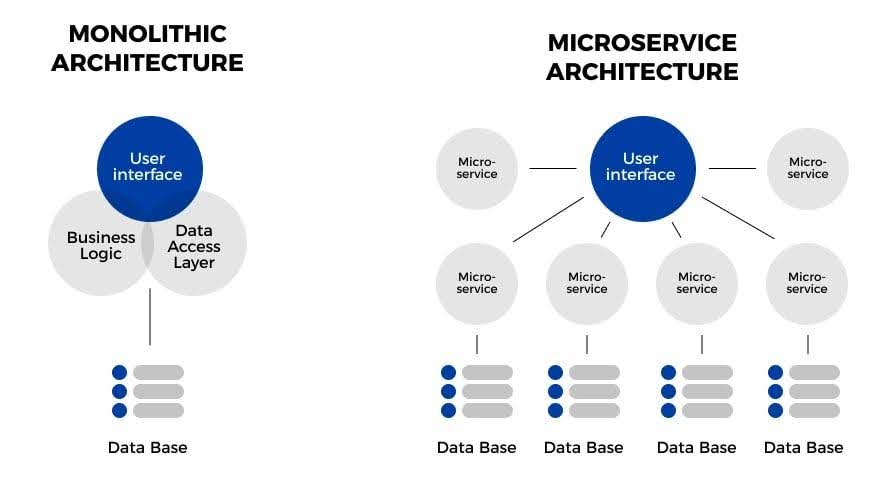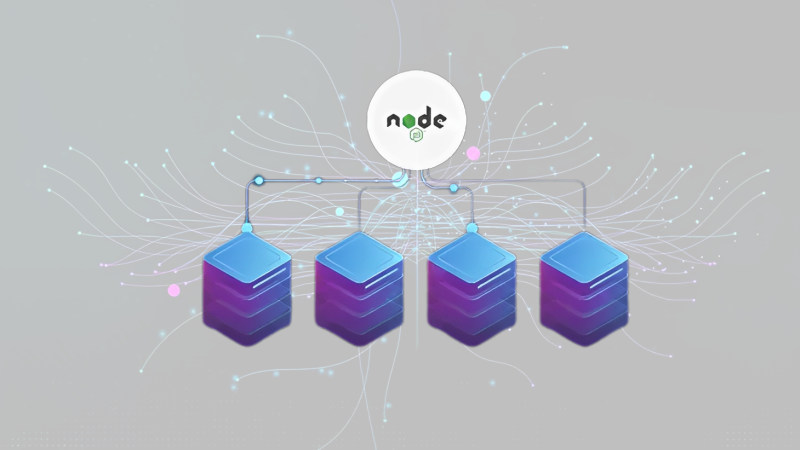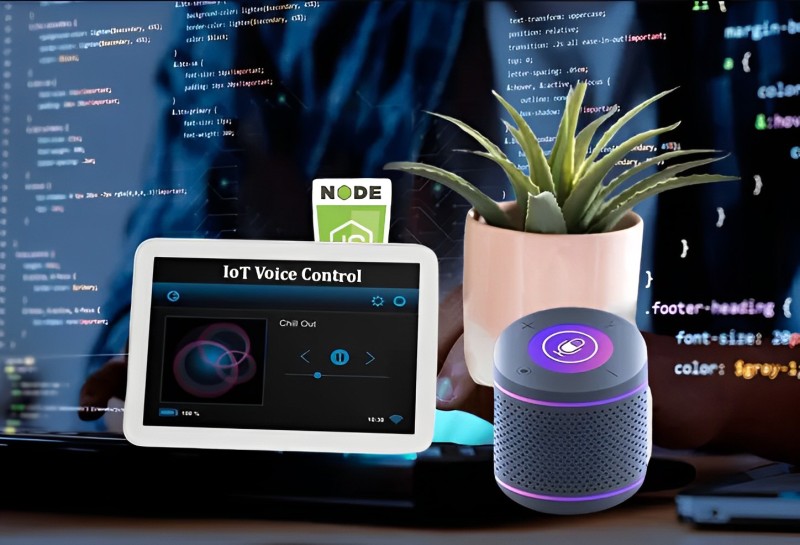Microservices vs. Monoliths: Node.js Best Practices Revealed
Software architecture decisions in today’s increasingly digital environment resemble that of an elegant ballet: monoliths are no longer unrivaled giants while microservices dance their decentralized ways on stage. Your choice as a developer should not simply revolve around “microservices or monoliths”, but more precisely “when does NodeJS become the ideal partner to your microservices choreography”

Imagine an expansive cathedral filled with stained-glass windows and the echoing organ – this is what the monolith represents: all functionality under one codebase with familiar features like familiar deployment methods and central control. But its strength lies in familiarity, ease of deployment, and centralized control – yet rigidity sets in quickly, making scaling cumbersome, debugging more time-consuming, and innovation slower due to this large mass.
Imagine A Ballet Where Each Dancer Contributes Their Moves

Now imagine an orchestra where each member adds his or her delicate steps for maximum grace – that is the microservices approach: loosely coupled services handle specific tasks using APIs while communicating to one another through APIs, its benefits being agility, scalability, and fault isolation: changes made to one service don’t instantly disrupt performance while innovation soared upward as independent teams worked on specific improvements independently of the overall system. Now NodeJS Joins This Symphony Of Fragmented Power With NodeJs Join this Microservices Ballet:
NodeJS stands out among microservices platforms as an undisputed expert due to its inherent qualities; making it the obvious choice.
- Modularity: NodeJS application development services embraces independent modules as building blocks ideal for crafting individual microservices – each service operating according to its code independently and solely. NodeJS lightweight nature makes it ideal for rapidly deploying independent services without overburdening a system’s resources – imagine dancers effortlessly moving across a stage as an analogy for Node’s smooth operation and efficiency.
- Event-Driven Architecture: NodeJS event-driven architecture perfectly accommodates microservice communication patterns: events are the signals, not requests; each movement is triggered precisely at its appointed moment like dancers responding to an orchestra conductor.NodeJS application development services offer an expansive ecosystem. From API development to containerization, its tools cover every microservice development need you can imagine; like an actor’s costume room bursting with elements ready for performance enhancement.
Practical Strategies for Designing Microservice Choreographic with NodeJS:
- Let’s get our Microservices show underway now: Think Small and Start Small: Don’t try for grand gestures here: start small by starting small services that build upon each other in small steps until eventually, your ecosystem will take form like any intricate ballet does from an idea into tangible services that comprise your ecosystem. Remember even elaborate choreography begins as small individual steps!
- Master the API Waltz: APIs serve as communication channels between services in your microservice architecture, so when designing them it’s crucial that they provide clear documentation and ensure smooth interactions among them – think of this process like crafting music to direct ballet’s rhythm!
- Containerize for Scalability: Containers offer portable stages to easily deploy and scale microservices independently, using containerization technology for effortless growth and performance optimization.
- Monitor and Observe: Don’t leave your microservices to dance up to chance – put into place monitoring tools that track performance, identify issues as they emerge, and ensure everything runs seamlessly – like having an expert stage manager keeping everything under control!
- Leverage Automation: As your microservices orchestra expands, repetitive tasks may begin to weigh on you. Take advantage of automation tools for deployments, testing, and infrastructure management to free up more of your time for creative composition and musical composition.
Beyond Technical Steps: The Microservices Mindset
Remember, microservices are more than a technology; it’s a mindset. By adopting decentralization, empowering independent teams, and cultivating an environment conducive to collaboration you will foster an atmosphere conducive to creating vibrant artistic communities where individual talents unite as part of something greater.
Node.js has its limitations:
Although Node.js excels at many microservices tasks, sometimes other tools might be better suited for certain jobs or situations that demand real-time responsiveness. Consider choosing tools that complement each dancer of your microservices ballet in terms of resource requirements or real-time responsiveness requirements – each may bring different strengths that should be leveraged effectively within its ballet of microservices dancers.
NodeJS and the Microservices Future
There is no simple binary between monoliths and microservices; both exist within digital landscapes; Node.js’ elegant agility provides the ideal partner for microservice architecture. Accept your fragmented future with open arms while following Node.js to craft an epic microservices masterpiece full of innovation, agility, and the boundless potential that decentralized software development entails.
Unleashing Microservices with NodeJS: Unlocking Scalability and Agility
NodeJS has become the perfect catalyst to orchestrate the microservices revolution and its event-driven grace is leading independent services into harmony while offering efficiency and scalability at scale. NodeJS serves as its master choreographer in orchestrating this dynamic dance between microservices revolutionaries, and smaller structures, NodeJS becoming their orchestrator to achieve maximum efficiency with maximum scaleability – Node.js is truly leading this revolutionary shift!
Venture into microservices requires more than simply choosing the appropriate tools; it requires an extreme shift in mindset between technical expertise and strategic orchestration. This 1000-word exploration dives deeper into NodeJS and microservices development services by offering practical tips to transform agile development visions into realities.
Imagine an orchestra of instruments contributing their unique sound towards creating an astounding crescendo – that’s microservices in action: independent services each playing their unique virtuosic part collaborate through APIs to offer superior user experiences, while Node.js acts as the conductor, orchestrating communication among these independent services while guaranteeing each performs perfectly.
Unveiling the Benefits: Microservices Make Music with NodeJS
There’s more to microservices than meets the eye – here’s why their allure extends far beyond mere buzzwords: Node.js and microservices form an irresistibly compelling pairing:
- Agility at Your Fingertips: Microservices offer agility to modern businesses: say goodbye to tedious deployments and time-consuming code migrations! By changing one service without disrupting others, microservices enable rapid innovation and quicker bug fixes – like individual musicians perfecting their parts without interfering with an orchestra’s performance.
- Scalability Takes Center Stage: Growth no longer means monolithic expansion – modular instruments like microservices can now be scaled independently in response to rising user needs, adding trumpets or drums without rebuilding an orchestra’s entire lineup.
- Fault Tolerance as Backup Singer: Errors in one service don’t throw off-key the whole performance. Microservices isolate failures so other services continue playing their tune without interruption – think of an imperfect violin not silencing an orchestra and disrupting its music instead.
- Decentralization Sets the Pace: Celebrate Diversity! Independent teams owning and providing specific services allows ownership as well as deeper expertise to flourish within them, similar to individual sections in an orchestra each mastering its part and contributing towards creating harmony throughout.
Tuning Your Microservices Performance: Practical Advice for NodeJS Maestros
Now let’s turn our theoretical understanding of microservices performance optimization into something tangible: here are a few invaluable pointers for creating microservice masterpieces with Node.js:
- Start Small and Think Microscale: Don’t try to build Wagnerian opera immediately; begin by creating well-defined loosely coupled services before gradually expanding your microservices ecosystem as your vision evolves. Even magnificent compositions start small.
- API Harmony as Conductor’s Baton: APIs serve as communication channels between microservices. Care should be taken when designing them to provide clear documentation and consistent interaction patterns – consider it like crafting sheet music that guides an orchestra’s concert performances!
- Containerization Provides a Portable Stage: Take advantage of portable container technologies like Docker and Kubernetes to deploy and scale microservices independently, streamlining management while optimizing performance – like individual instrument cases ready to perform anywhere!
- Monitoring as an Attentive Listener: Don’t let your microservices operate in the dark! Utilizing monitoring tools will enable you to keep an eye on performance, identify any issues as soon as they arise, and ensure software never misses a beat – like having an attentive stage manager keeping everything in sync while preventing unexpected solo performances!
- Automation Is a Stagehand’s Magic: Repetitive tasks can wear even the most dedicated musician down. Embark upon automation tools for deployments, tests, infrastructure management and infrastructure monitoring to free your time for creative problem-solving and innovative composition. Imagine automated systems handling backstage tasks so orchestral players can focus entirely on playing music!
- Beyond Technology: Adopting the Microservices Mindset Microservices represent more than a technical shift; they represent an entire cultural revolution. Create an atmosphere of decentralization by empowering independent teams and nurturing a culture of collaborative ownership – like building an opera chorus in which individual talents blend beautifully into an outstanding collective performance.
- NodeJS and Beyond: Selecting the Appropriate Instruments While Node.js excels in many microservice scenarios, it should not be seen as the sole player on stage. Consider alternatives such as Go or Python Development Services when engaging in resource-intensive tasks that demand real-time responsiveness – these languages bring different strengths that should complement Node’s own repertoire in creating cohesive compositions. Choose tools carefully according to each task at hand for best results!
NodeJS Serves As Conductor For Microservices Melodies
Software development’s future lies not in a monolithic monologue but in an orchestra of microservices orchestrated by skilled developers and empowered teams. Node.js stands as its conductor guiding microservice applications toward new heights of agility, scalability, and resilience.
However, your journey through NodeJS and microservices doesn’t end here; rather it just begins! Before entering the stage for yourself remember these final notes:
- Continuous Learning: Microservices development is ever-evolving. Embark upon an academic approach of continuous learning by investigating new technologies, frameworks, and best practices – just keep tuning to ensure perfect harmony within your orchestra!
- Community Collaboration: You don’t have to navigate microservices composition alone! Join a vibrant developer community, share experiences, and draw wisdom from those who’ve come before you in this craft.
- Experimentation Is Key: Don’t be shy to experiment and explore various architectures and tools – microservices offer tremendous flexibility that enables users to adapt as their needs and skills change over time.
Dear developer, take a deep breath, raise your baton, and let Node.js be your musical conductor as you create beautiful software through decentralized development that not only functions flawlessly but is an expression of creativity and agility.
Now is your turn: step onstage and join the orchestra of tomorrow. Share your ideas, challenges, and successes in the comments below; together we can build software that not only solves problems but also dances, sings, and inspires!
Remind yourself, however, that software development’s future lies not with writing code but in collaboration, innovation, and relentlessly creating an agile, efficient, and pleasant digital universe. Go forth, and create your masterpiece using microservices – this way to success!
FAQs
1 What exactly are microservices and how can they differ from monoliths?
Imagine a monolithic software application as an enormous castle with all features under its umbrella; contrast this to microservices which act more like an agile village with individual houses (services) handling specific tasks and communicating through well-defined roads (APIs). Their decentralization ensures they’re more agile, scalable, and fault-tolerant than their monolithic counterpart.
2 Why Is Node.js Appropriate For Microservices Architecture?
Node.js is ideal for building microservice architecture due to its lightweight nature, event-driven architecture, and modular nature; these attributes make Node.js a suitable tool for creating independent services akin to selecting lightweight but flexible building materials for village houses to adapt easily while remaining collaboratively sustainable.
3 What are the key advantages of Node.js for microservice development?
- Agility: Updates or innovations impact only one service at once, providing faster updates and innovation.
- Scalability: Individual services may be expanded independently without rebuilding everything; similar to adding houses without rebuilding it all at the same time. Fault Isolation: Errors in one service do not bring down the whole village; thus maintaining ongoing operation and resilience of services across your organization.
Node.js offers an expansive ecosystem for developing microservices with Node.js; with numerous libraries and frameworks that cover virtually every microservice need, Node provides tools that make design and development simpler than ever before.
4 What are some practical tips for designing and creating microservices using Node.js?
Starting small and modular: Start small by starting with well-defined services to gradually build out a village instead of taking an imperious approach to microservice development. * Master the API Waltz: Design consistent APIs so your microservice houses communicate freely among themselves.
- Containerize for Scalability: Take advantage of Docker containerization technology for fast deployment and independent scaling, along with monitoring tools that detect issues quickly to maintain optimal operation of your village. * Monitor & Observe: To keep tabs on everything that happens within your village and monitor for issues as needed to maintain smooth operations, utilize monitoring technologies.
- Automate repetitive tasks: Leverage automation tools to speed deployment, testing, and infrastructure management to free your time for creative development.
5 Are There Any Downsides to Node.js for Microservices?
While Node.js can excel at many tasks and situations that demand real-time responsiveness, such as resource-intensive ones. For such instances, it may not be suitable. Consider Go or Python alternatives instead for such use cases.
6 How can I manage the complexity of multiple microservices in a Node.js project?
Automation and containerization will help manage complexity with ease; utilize container orchestration tools like Kubernetes for optimal deployment and scaling across your microservice village.
7 Can You Share Some Successful Microservices Applications Built Using Node.js?
Popular platforms such as Netflix, PayPal, and Uber make use of Nodejs-powered microservice architectures as an indicator of their scalability and agility for managing large user bases with complex functionalities.
8 Where can I learn about microservices and Node.js development?
Many online resources, tutorials, and communities can offer invaluable guidance – Coursera, Udemy, Egghead.io, and the Node.js community offer invaluable learning experiences that will enhance both knowledge and skill acquisition.
9 What are some potential hurdles associated with adopting a microservices approach using Node.js?
Management complexity, distributed debugging issues and API design constraints may present obstacles for microservices adoption. Establishing a strong microservices culture while tapping community resources could help overcome such hurdles.
10 Does Microservices and Node.js represent the future of software development?
Node.js and microservices provide many advantages; however, they should not be seen as the sole tools available to developers for meeting each need. Future developments will likely bring forth various architectures and technologies with developers selecting those best suited to meet each particular challenge.
Take your time, experiment, learn from others in the community, and unleash your creativity to discover all its possibilities in the NodeJS dynamic technological landscape.



